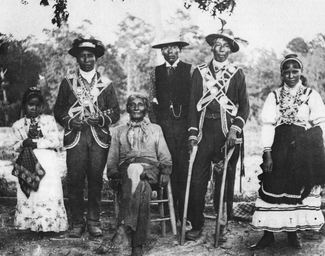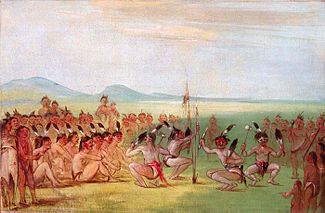

| Mythology |
|---|
Choctaw mythology is part of the culture of the Choctaw, a Native American tribe originally occupying a large territory in the present-day Southeastern United States: much of the states of Mississippi, Alabama, and Louisiana. In the 19th century, the Choctaw were known to European Americans as one of the "Five Civilized Tribes" even though controversy surrounds their removal.
Today the Choctaw have three federally recognized tribes: the largest is the Choctaw Nation of Oklahoma, next is the Mississippi Band of Choctaw Indians, made up of descendants of individuals who did not remove in the 1830s, and the smallest is the Jena Band of Choctaw Indians, located in Louisiana. Also, the Choctaw Apache Tribe of Ebarb, state recognized by Louisiana and resides in Sabine Parish, Louisiana. In addition, the MOWA Band of Choctaw Indians is state-recognized by Alabama, but it has not achieved federal recognition. It, too, is made up of descendants of individuals who remained in the Southeast in the 1830s.
The Choctaw and their ancestors have lived in the Mississippi region in what is now the southeastern region of the US for centuries. Thousands of years of myth and story-making have contributed to a rich collection of history. The Choctaw continue to tell and write about their legends.
- ^ "Eagle Dance, Choctaw." Archived 22 September 2012 at the Wayback Machine Luce Foundation for American Art. (retrieved 7 September 2010)
© MMXXIII Rich X Search. We shall prevail. All rights reserved. Rich X Search
